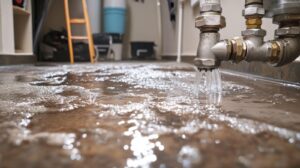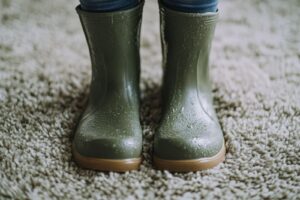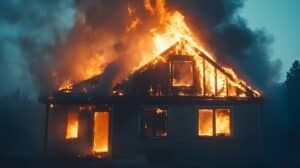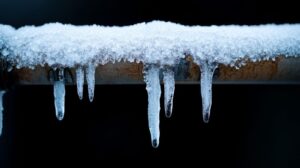Unseen and often underestimated, mold damage silently creeps into our spaces. But fear not — this comprehensive guide is your shield against its invasion!
Mold can grow anywhere there is moisture, especially in places where sunlight doesn’t reach. Walls, books, clothes, ceilings, carpets, and more can all be affected. It’s not just an aesthetic problem; mold damage can have serious health implications and compromise the structural integrity of a building.
In this comprehensive guide, we’re diving into the unpleasant world of mold damage, from its causes and signs to prevention and remediation strategies.
What is mold?
Molds are a natural part of the environment and can exist anywhere moisture is present. Damp and humid conditions cause mold spores to reproduce and grow on various surfaces. While mold plays a vital role in breaking down and digesting organic material, it becomes a problem when it grows indoors.
Indoor mold growth is jarring, unsightly, and potentially hazardous. Mold can grow in the walls, under the floorboards, or in the HVAC system. Molds in large quantities can also cause allergic reactions, asthma attacks, and irritation around the eyes, skin, nose, throat, and lungs.
Types of indoor mold
There are over 100,000 types of mold, but not all kinds are a threat. The danger of mold will depend on its type. Here are the three main classifications of indoor mold:
- Allergenic: Mold that causes an allergic reaction such as an eye or skin irritation
- Pathogenic: Mold that can cause disease
- Toxigenic: Mold that is toxic and can lead to deadly health issues
One mold type can check the boxes of multiple classifications. Some of the most common indoor molds include Acremonium, Alternaria, Aspergillus, Cladosporium, Penicillium, and Trichoderma. Regardless of the type, all mold growth should be treated by a mold removal company as quickly as possible.

Causes of mold growth
Moisture
As previously mentioned, moisture is the primary factor that encourages mold to stake out its territory indoors. Leaks, flooding, and condensation are the most common sources of excess moisture and subsequent mold growth. Addressing any water issues promptly is the best way to prevent a mold problem before it takes root.
Poor ventilation
Poor or missing ventilation will trap moisture indoors, creating the perfect environment for mold to become comfortable and spread. Moist areas like bathrooms, kitchens, and basements, where ventilation is necessary, are particularly susceptible.
Broken walls
A damaged wall can let water in, making the wall more damp over time. If you notice any part of your wall is damp, look for the moisture source first. A wet wall is particularly attractive to mold, so have the area tested for growth as you take care of the water problem.
High humidity
Anyone who has ever lived in a humid area knows the headache of keeping mold at bay. Humidity levels above 60% provide an ideal breeding ground for stealthy mold. Checking and regulating indoor humidity levels through the use of dehumidifiers or air conditioning can help prevent mold issues.
Signs of mold damage
Now that we know what mold is and its causes, here are five ways to recognize a mold problem in your home before it gets too out of hand:
Discoloration
Visual signs are usually the first indicators of mold growth. Grey, black, green, or bluish spots on walls, ceilings, or other surfaces can denote mold. Mold can also have a powdery or fuzzy texture.
Odor
Mold often carries a musty odor. Sometimes, a persistent, musty smell is the only clear sign of mold. If you don’t see mold but notice a concerning odor, call in a mold remediation team to check it out.
Damp areas
If any surfaces feel damp that should, that could be a sign of mold rearing its ugly head behind the scenes. Wet walls, flooring, furniture, ceilings, or cabinetry can indicate that the humidity level is too high, a leak has occurred, or another water problem. This excess moisture can encourage mold to move in and spread.
Bubbling paint
Bubbling or peeling paint doesn’t always indicate a mold problem, but it can signify moisture intrusion. Bubbling can occur on both the baseboard and the wall when mold is present.
Health symptoms
Inhaling mold spores can lead to respiratory infections, allergies, fever, chest pain, blood coughing, or other health symptoms. If you notice increased exhaustion, hard breathing, coughing, wheezing, etc., have your home tested for mold.
Mold prevention strategies
Nobody wants to deal with the health or financial implications of a mold problem, so here are three steps you can take to deter mold from your home:
Moisture control
Regularly inspect your property for leaks and water damage, addressing any issues as quickly as possible. Also, maintain indoor humidity levels below 60%.
Adequate ventilation
Ensure indoor humidity levels remain below 60%. Install exhaust fans in bathrooms and kitchens, and open windows and doors to allow fresh air to circulate.
Prompt cleanup
If you experience water damage, act quickly to dry the affected areas. Remove and replace materials that cannot be adequately dried, such as carpets and insulation.

DIY vs. professional remediation
So, you’ve identified mold in your house — should you hire a professional mold removal company or take care of it yourself? As a general rule of thumb, it’s always best to seek the advice of a mold remediation expert before attempting to tackle a mold problem on your own.
Minor mold issues can often be addressed through DIY methods, such as mold-killing cleansers or improved ventilation. On the other hand, large-scale or persistent mold problems warrant professional help. These experts will ensure thorough removal and prevention of recurrence.
DIY mold remediation steps and tips
If you’re experiencing a minor mold issue that you feel comfortable remediating on your own, apply the following steps for safety and success:
- When dealing with mold, always wear appropriate personal protective equipment (PPE). This may include masks, gloves, or eyewear to protect yourself from exposure.
- Isolate the affected area to prevent the spread of mold spores to other parts of the property.
- Use mold-killing solutions to clean any affected surfaces thoroughly. Avoid using bleach on porous materials, as it doesn’t always eliminate the root of the mold.
- Dispose of all contaminated materials properly, following local regulations for mold-infested items.
Professional mold remediation process
The first step in the remediation process is to thoroughly inspect the property. The goal is to determine the extent and nature of the mold problem.
Next, the remediation team will collect samples to evaluate the type of mold and level of contamination.
To prevent mold spores from spreading to unaffected areas, the mold remediation team will implement containment procedures. This usually involves sealing off the region using plastic sheeting.
Mold remediation specialists will wear PPE throughout the process to guarantee their safety. Respirators, gloves, and suits are common during mold removal.
Next, the mold is physically removed from the premises. Scrubbing, sanding, or using specialized cleaning solutions might be necessary to eliminate mold spores for good.
Restoration specialists should address any underlying moisture concerns during mold remediation. Dehumidifiers and fans aid in this process.
Once remediation is complete, a legitimate mold removal company will perform a post-cleaning inspection. This final inspection is to ensure that all mold has been successfully eliminated and the area is safe to inhabit again.
Mold remediation experts will also provide recommendations to avoid future mold problems. This might include ventilation recommendations, fixing broken pipes, or identifying moisture issues.
Finally, post-remediation testing will ensure that all mold has been removed safely from the property.
Finding a trustworthy mold removal company
As you may know, mold testing and remediation has grown into a booming business in recent years. Consequently, the industry includes a handful of scammers who pretend to be mold removal specialists. While mold inspection, testing, and remediation are real services, be on high alert for any company employing scare tactics, giving no guarantees, or promising too-good-to-be-true results.
Here’s how you can find a mold remediation team you can trust:
- Beware of any company that actively shares “horror” stories of mold growth.
- Legitimate companies will offer some degree of a guarantee for their mold remediation work.
- On the other hand, remember that if a certain result or service sounds too good to be true, it probably is.
- A trustworthy service typically won’t require paying the total cost upfront.
- Scammers will not possess in-depth knowledge about mold formation, types of molds, proper remediation tactics, etc. Ask for credentials if you suspect a scam.
- Check for negative reviews online.
Contact Black Diamond Restoration for Utah mold remediation today
Black Diamond Restoration is a market leader in Utah mold damage remediation. You can trust our certified experts to get the job done quickly and efficiently. We offer comprehensive, professional services to homeowners and businesses alike. If your property has been damaged, then we’re the company to call.Contact Black Diamond Restoration today if you have mold restoration needs. We’ll get your life and living space back to normal in no time.
toto slot






